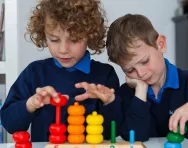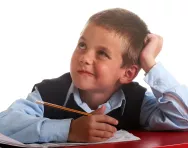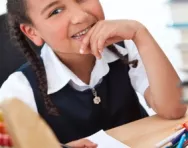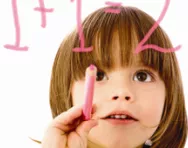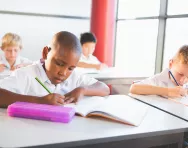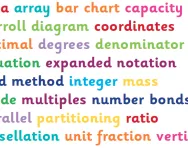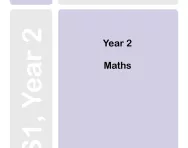Important update from TheSchoolRun
For the past 13 years, TheSchoolRun has been run by a small team of mums working from home, dedicated to providing quality educational resources to primary school parents. Unfortunately, rising supplier costs and falling revenue have made it impossible for us to continue operating, and we’ve had to make the difficult decision to close. The good news: We’ve arranged for another educational provider to take over many of our resources. These will be hosted on a new portal, where the content will be updated and expanded to support your child’s learning.
What this means for subscribers:
- Your subscription is still active, and for now, you can keep using the website as normal — just log in with your usual details to access all our articles and resources*.
- In a few months, all resources will move to the new portal. You’ll continue to have access there until your subscription ends. We’ll send you full details nearer the time.
- As a thank you for your support, we’ll also be sending you 16 primary school eBooks (worth £108.84) to download and keep.
A few changes to be aware of:
- The Learning Journey weekly email has ended, but your child’s plan will still be updated on your dashboard each Monday. Just log in to see the recommended worksheets.
- The 11+ weekly emails have now ended. We sent you all the remaining emails in the series at the end of March — please check your inbox (and spam folder) if you haven’t seen them. You can also follow the full programme here: 11+ Learning Journey.
If you have any questions, please contact us at [email protected]. Thank you for being part of our journey it’s been a privilege to support your family’s learning.
*If you need to reset your password, it will still work as usual. Please check your spam folder if the reset email doesn’t appear in your inbox.
KS1 maths SATs: what is tested in the Y2 assessments
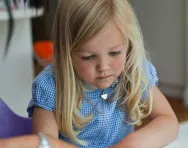
If your child's school chooses to continue with Key Stage 1 SATs, they will administer them at the end of Year 2. They're used so that teachers can see how much progress children have made throughout the Key Stage. They also help to identify which children are below or above average for their year group so they can be given extra support.
Children take two separate KS1 maths SATs: arithmetic and reasoning.
Arithmetic
The arithmetic paper consists of 25 questions and takes about 20 minutes, although it isn't strictly timed. This paper will test your child on their knowledge of the four operations: addition, subtraction, multiplication and division. The questions are all in number sentences, with no word problems, such as:
15 + 9 = ______
7 + _____ = 12
2 x 5 = _____
36 - 20 = _____
35 / 7 = _____
48 + 23 = _____
1/4 of 20 = _____
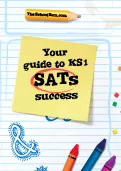
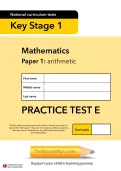
Prepare your child for KS1 SATs today
- Your guide to KS1 SATs
- KS1 SATs revision course
- 10 KS1 SATs practice papers in English & maths
Reasoning
The reasoning paper includes about 30 questions and takes about 35 minutes. It starts with five mental maths questions, read aloud by the teacher. The paper will test your child on their ability to apply their maths skills to various problems and puzzles. They will be tested on all four operations, fractions, measurement, geometry and statistics.
We have picked out the most important objectives that your child needs to cover in preparation for SATs and given explanations and examples to make things clearer.
Number and place value
| Counting in steps of 2, 3, 5 and 10 | This forms the basis for learning times tables. Your child will need to start from 0 and count up in twos (2, 4, 6, 8 etc) then do the same for threes, fives and tens. | |
| Recognising the place value of each digit in a two-digit number | Your child needs to know that the number 35 is made up of 30 and 5. Making up numbers with arrow cards can be helpful with making this point clear. | |
| Putting the numbers 0 to 100 in the correct order, and using the < and > symbols. | They need to use the above knowledge to work out how to order numbers. They need to pick the biggest number out of two different numbers. They also need to be able to use < and > symbols so they can present two numbers and show which is biggests, e.g. 45 > 23. | |
| Reading and writing numbers to at least 100 in numerals and words. | Your child will need to hear a two-digit number and be able to write it in numerals and words, e.g. 79 and seventy-nine. |
Calculating
| Knowing addition and subtraction facts to 20. | Addition facts to 20 are all the pairs of numbers that make 20, e.g. 1 + 19, 2 + 18, 3 + 17 etc. Your child also needs to know the corresponding subtraction facts, e.g. 20 - 13 = 7 and 20 - 7 = 13. They need to know these backwards in their sleep! | |
| Adding and subtracting one- and two-digit numbers. | Children need to know how to solve the following types of number sentences: 34 + 5 = _____, 29 + 20 = _____, 56 - 4 = _____, 6 + 3 + 7 + _______. Your child can work these out in any way they like, for example with number lines or pictures. Their teacher may use arrow cards and deines to help with this. | |
| Learning the 2, 5 and 10 times tables, plus division facts. | It is essential that your child knows these times tables by the end of Year 2. They also need to know the division facts for these times tables, for example if 4 x 5 = 20, then 20 / 4 = 5 and 20 / 5 + 4. | |
| Identifying odd and even numbers. | Children need to learn that even numbers can be put into several pairs with no 'odd one out.' Alternatively they may be told that even numbers can be split into two equal groups. They need to learn that even numbers end in 2, 4, 6, 8 or 0, and odd numbers end in 1, 3, 5, 7 or 9. | |
| Writing number sentences using the x, / and = symbols. | Your child may be shown an array, where 20 beads have been laid out in five rows of four. They may be asked to write this as a multiplication number sentence, e.g. 5 x 4 = 20 or 4 x 5 = 20. If they are asked to turn this into a division number sentence, they will need to write 20 / 4 = 5 or 20 / 5 = 4. |
Fractions
| Finding 1/3, 1/4, 2/4 and 3/4 of a shape or quantity. | Children will already have learnt to find 1/2 and 1/4 of different shapes or quantities in Year 1. For example, they may have been shown 10 sweets and asked to find half. In Year 2 they move onto slightly more difficult fractions. They may be shown a picture of a pizza already cut into four equal pieces and be asked to colour 2/4 or 3/4. They may also work on finding 1/3 of a quantity; for example, they might be given 12 sweets and asked to share them into three equal groups by counting them out one by one. | |
| Writing simple fractions. | Children need to have the ability to express their fractions, for example by writing 1/2 of 6 is 3. | |
| Understanding simple equivalence. | Children need to be able to see that 1/2 is the same as 2/4 by looking at a diagram of a shape that has been shaded. |
Measurement
| Using appropriate units to measure length, weight and capacity. | Children need to be able to use centimetres and metres to measure the length or height of certain objects. They need to use grams and kilograms to measure the weight of objects. They need to use millilitres and litres to measure temperature. They also need to use degrees centigrade to measure temperature. Teachers will give them a variety of practical activities to help make these concepts clear. | |
| Calculating with money. | Children will need to know the symbols for pounds and pence (£ and p). They need to be able to combine amounts to make a particular value (how many 20ps make 60p?). They will also need to find different combinations of coins that make one amount, e.g. how many different ways can you make 50p? They need to add and subtract amounts of money, including working out how much change to give. | |
| Telling the time to five minutes, including quarter to and quarter past. | Children will have learnt to tell the time to half an hour in Year 1. They now need to understand quarter to and quarter past and be able to say how many minutes past or to the hour it is, to the nearest five minutes. They need to know there are 60 minutes in an hour. They will also need to compare different lengths of time, e.g. knowing that 40 minutes is longer than half an hour. |
Geometry
| Identifying and describing the properties of 2D shapes. | Children need to be able to name a circle, triangle, square, pentagon, hexagon and octagon by counting the sides. They need to be able to draw a vertical line down the centre of a shape to say if it is symmetrical. | |
| Identifying and describing the properties of 3D shapes. | Children need to look at various 3D shapes (sphere, cube, cuboid, triangular prism, cone, square-based pyramid) and count the number of edges, faces and vertices each one has. | |
| Understanding that a quarter turn is a right angle. Being able to turn an object a quarter, half or three-quarter turn in a clockwise or anti-clockwise direction. | Children will be asked to make turns themselves to make these concepts clear. They may be asked to turn a toy to show these turns. |
Statistics
| Interpreting and constructing simple pictograms, tally charts, block diagrams and simple tables. | Children will be asked to gather data, usually in a tally chart or table, then present this data as a pictogram or block chart. At this stage, teachers usually give children a frame to help them present their data. | |
| Answering questions about the data presented. | Children will be asked questions about their data, for example if they have a bar chart showing the favourite colours of the children in their class, they may be asked which is the most popular colour, which is the least popular, how many more children prefer purple to red, and how many children were asked altogether. |
Y2 English SATs explained for parents
Find a complete guide to the learning objectives for KS1 English SATs in our guides. We also answer general parents' questions about SATs in Y2, with links to further guidance.
KS1 SATs past papers and practice and revision materials
KS1 SATs past papers from 2016 to last year are available to download for free from TheSchoolRun if you would like to see the papers' format and do some practice with your child at home.
TheSchoolRun also offers subscriber-only KS1 SATs 'mock' papers, written by teachers to offer extra practice for the Y2 assessments.
Our KS1 SATs Learning Journey offers 48 worksheets and activities to help your child revise all the Y2 objectives for English and maths the fun way.
